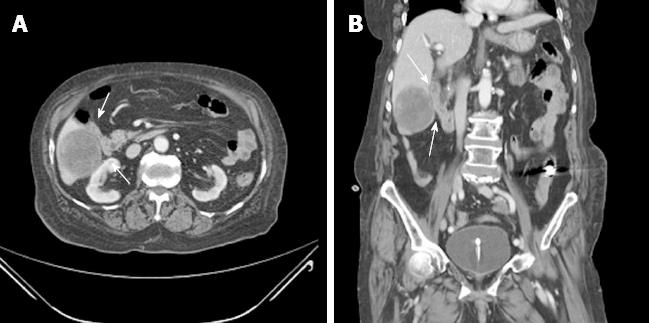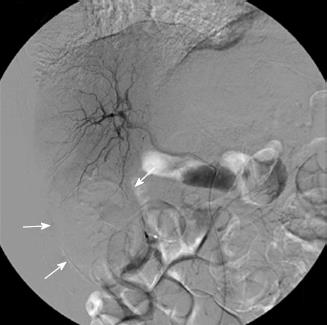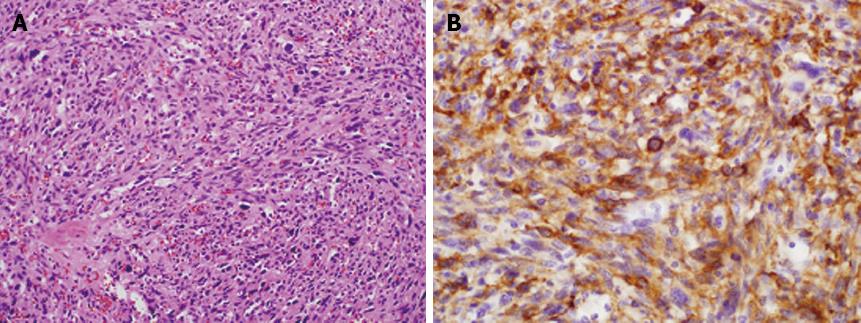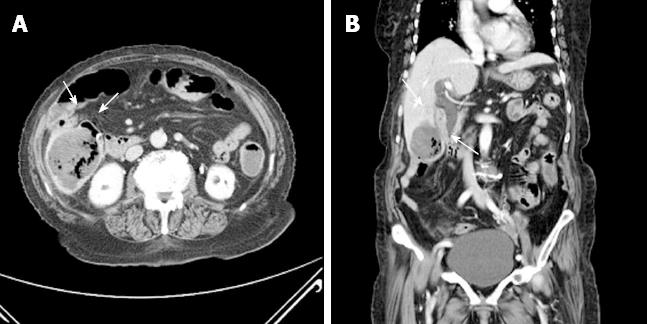Copyright
©2013 Baishideng Publishing Group Co.
World J Gastroenterol. Nov 21, 2013; 19(43): 7816-7819
Published online Nov 21, 2013. doi: 10.3748/wjg.v19.i43.7816
Published online Nov 21, 2013. doi: 10.3748/wjg.v19.i43.7816
Figure 1 Initial abdominopelvic computed tomography findings.
Enhanced computed tomography shows a 5.7 cm × 5.2 cm heterogeneous enhancing liver mass connected with a small mass of the distal ileum (arrows). A: Axial view; B: Coronal view.
Figure 2 Large protruding mass on the distal ileum (enteroscopic findings).
A large protruding mass with ulceration was found on the distal ileum.
Figure 3 Angiographic findings (post-embolization state).
Angiography shows that the hepatic mass (arrows) was not supplied by the right hepatic artery after embolization.
Figure 4 Microscopic findings (Endoscopic biopsy specimen in the ileum).
A: Microscopic image of the specimen demonstrating spindle cells (HE, × 200); B: The tumor cells were strongly positive for c-KIT (c-KIT, × 400).
Figure 5 Abdominopelvic computed tomography findings after embolization.
Internal necrosis and direct communication (arrows) with the small bowel were identified in the liver mass. A: Axial view; B: Coronal view.
Figure 6 Gross findings of resected segment of the distal ileum.
It showed a large fistula orifice (arrow) which connected with the adjacent liver, as proven by food material in the liver mass.
- Citation: Lee YH, Koo JS, Jung CH, Chung SY, Lee JJ, Kim SY, Hyun JJ, Jung SW, Choung RS, Lee SW, Choi JH. Development of enterohepatic fistula after embolization in ileal gastrointestinal stromal tumor: A case report. World J Gastroenterol 2013; 19(43): 7816-7819
- URL: https://www.wjgnet.com/1007-9327/full/v19/i43/7816.htm
- DOI: https://dx.doi.org/10.3748/wjg.v19.i43.7816














